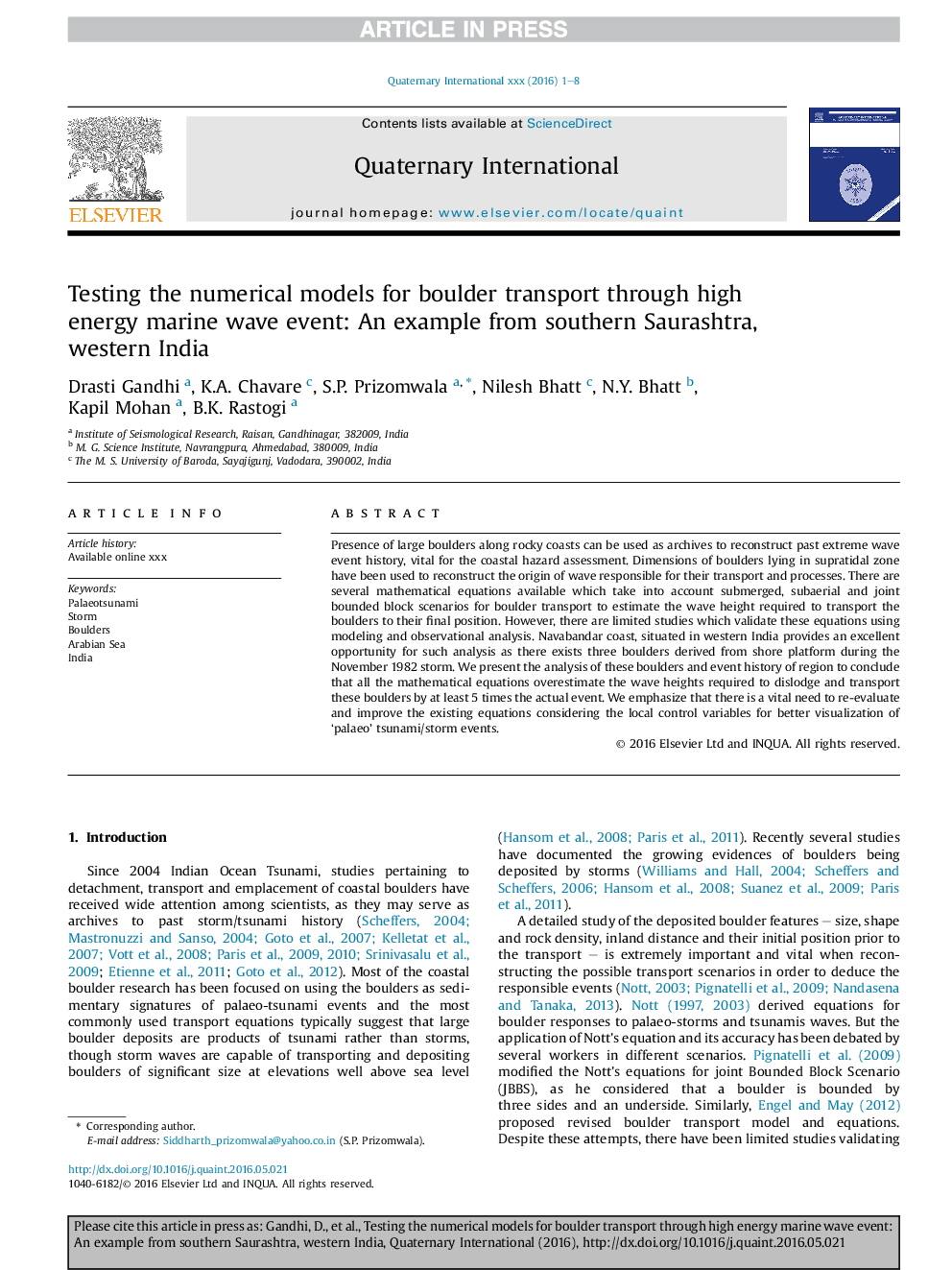| Article ID | Journal | Published Year | Pages | File Type |
|---|---|---|---|---|
| 5113399 | Quaternary International | 2017 | 8 Pages |
Abstract
Presence of large boulders along rocky coasts can be used as archives to reconstruct past extreme wave event history, vital for the coastal hazard assessment. Dimensions of boulders lying in supratidal zone have been used to reconstruct the origin of wave responsible for their transport and processes. There are several mathematical equations available which take into account submerged, subaerial and joint bounded block scenarios for boulder transport to estimate the wave height required to transport the boulders to their final position. However, there are limited studies which validate these equations using modeling and observational analysis. Navabandar coast, situated in western India provides an excellent opportunity for such analysis as there exists three boulders derived from shore platform during the November 1982 storm. We present the analysis of these boulders and event history of region to conclude that all the mathematical equations overestimate the wave heights required to dislodge and transport these boulders by at least 5 times the actual event. We emphasize that there is a vital need to re-evaluate and improve the existing equations considering the local control variables for better visualization of 'palaeo' tsunami/storm events.
Related Topics
Physical Sciences and Engineering
Earth and Planetary Sciences
Geology
Authors
Drasti Gandhi, K.A. Chavare, S.P. Prizomwala, Nilesh Bhatt, N.Y. Bhatt, Kapil Mohan, B.K. Rastogi,
